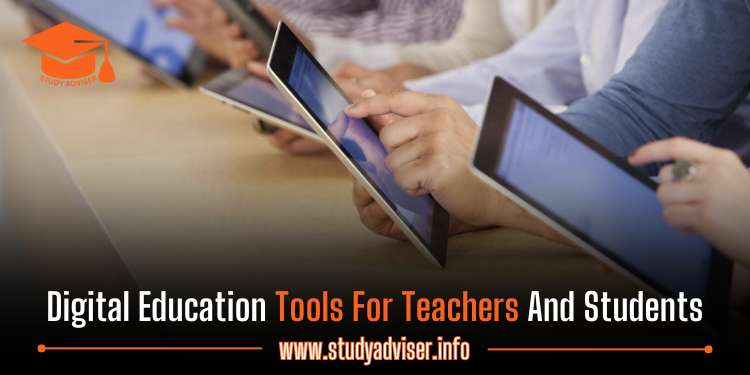The digital revolution has impacted education enormously over the last decade. Classrooms nowadays utilize various digital education tools and online platforms to enhance teaching and learning. These modern technologies allow teachers to make lessons more interactive and personalized while enabling students to learn collaboratively.
This article discusses popular digital education tools used by teachers and students in 2024. We will cover platforms for creating presentations, assessments, behavior management, storytelling, video creation and more. Read on to discover useful edtech tools that facilitate remote and blended learning environments.
Powerful Presentation Tools
One impact of educational technology is better lesson delivery through visual presentations. Interactive slides keep students engaged during lectures by incorporating videos, links, quizzes and social media. Two excellent presentation tools are:
Projeqt: This software allows teachers to build media-rich slides with dynamic elements like online polls, Twitter feeds and YouTube clips. Presentations made on Projeqt automatically reformat for mobile devices so they display properly when shared in class. Educators can create visually appealing lectures while students access content across laptops, tablets and smartphones.
TED-Ed: TED-Ed is a free presentation tool and library of educational videos. Teachers can utilize existing TED-Ed lessons or create customized lectures. You can add context, discussion questions and supplemental resources to any video. Students can then thoughtfully respond with their perspectives. TED-Ed fosters active participation and idea exchange among teachers and learners globally.
Innovative Assessment Apps
Quick student progress monitoring is vital for differentiated instruction and personalization. Many apps today allow teachers to instantly check understanding and gain insight into mastery levels. Two top assessment tools include:
Socrative: This student response system works on phones, laptops and tablets. Teachers can deliver formative quizzes and exit tickets with multiple choice, true/false and open-ended items. Socrative then instantly aggregates the data so teachers see overall class performance and individual student results. Educators can determine if more teaching is required and tailor subsequent plans.
Related: The 10 Best Study Apps for Students
Kahoot: One of the most popular educational games currently is Kahoot. It allows teachers to create fun game-based quizzes on any subject. Students answer on their own devices while competing in real-time to get the highest score. Kahoot combines assessment and entertainment for an engaging learning experience that motivates students to review material.
Behavior Management Technology
Maintaining an orderly, positive classroom environment is critical for students to focus and process information during lessons. Digital tools can assist by streamlining rewards systems and communication with parents. Check out these behavior management platforms:
ClassDojo: This app builds classroom community through a behavior point system. Teachers give students points during class for positive learning habits like participating, persevering through challenges and helping peers. Students additionally get instant feedback notifications like “Good teamwork” or “+3 points”. Parents can access the feedback stream via mobile app, fostering at-home conversations.
Kickboard: Kickboard is online behavior dashboard predominantly used by schools and districts. It centralizes data collection for attendance, grades and conduct. Teachers record merits/demerits throughout the day. Kickboard aggregates the metrics so stakeholders see averages, trends and percentages. Having one unified platform promotes consistency across the school.
Storytelling Sites
Students’ reading, writing and communication skills are strengthened when educators incorporate storytelling into the curriculum. Digital tools make authoring and publishing stories simple and artistic. Try these sites:
Storybird: This platform features gorgeous artwork that authors can pair with their own text to create picture books. Teachers can set up collaborative class Storybird accounts for students to write together or provide peer feedback. Budding authors can then publish their completed tales electronically or in print.
Animoto: Whereas Storybird focuses just on stories, Animoto helps build video stories. Students can select photos, text, music and video clips to convey narratives on any topic. The site automatically synchronizes everything into a professional-quality shareable video. Animoto videos keep students creatively engaged in lessons.
Research and Reference Management
Sifting through multitudes of online content is commonplace when researching academic subjects, requiring tools to organize findings for future referencing. These sites streamline the process:
eduClipper: This social bookmarking app lets users curate educational resources from across the web. Teachers and students can share materials with colleagues and annotate pages with comments. eduClipper essentially helps you create your own personalized resource database.
Related: Free online resources for research papers
EasyBib: As research papers and projects amass, properly citing sources becomes critical. EasyBib instantly generates citations for articles, books, websites and more. Just scan barcodes or enter titles and EasyBib structures citations in MLA, APA and Chicago formats complete with hanging indents.
The Value of Digital Education Tools
This article presented merely a sample of the hundreds of digital tools modernizing instruction in schools today. Online platforms facilitate more personalized, collaborative and engaging learning while giving teachers real-time insights into student needs.
Technology makes differentiated lessons readily accessible to support various learning styles and ability levels too. Digital tools additionally foster skill growth in creativity through multimedia projects, problem-solving via simulations and communication within remote small groups.
In 2024 and beyond, classrooms will continue embracing edtech to promote vibrant personalized learning and prepare students with 21st century abilities to apply knowledge inventively across contexts. Digital education tools have become fundamental aids benefitting both teachers and students.
